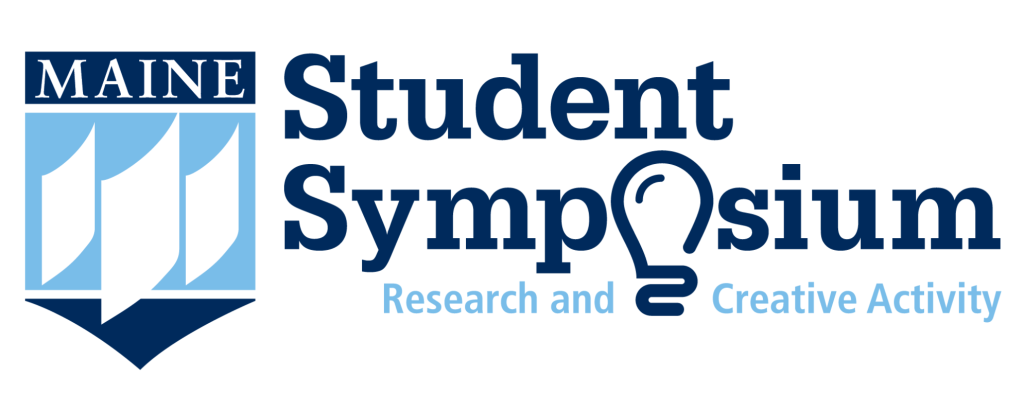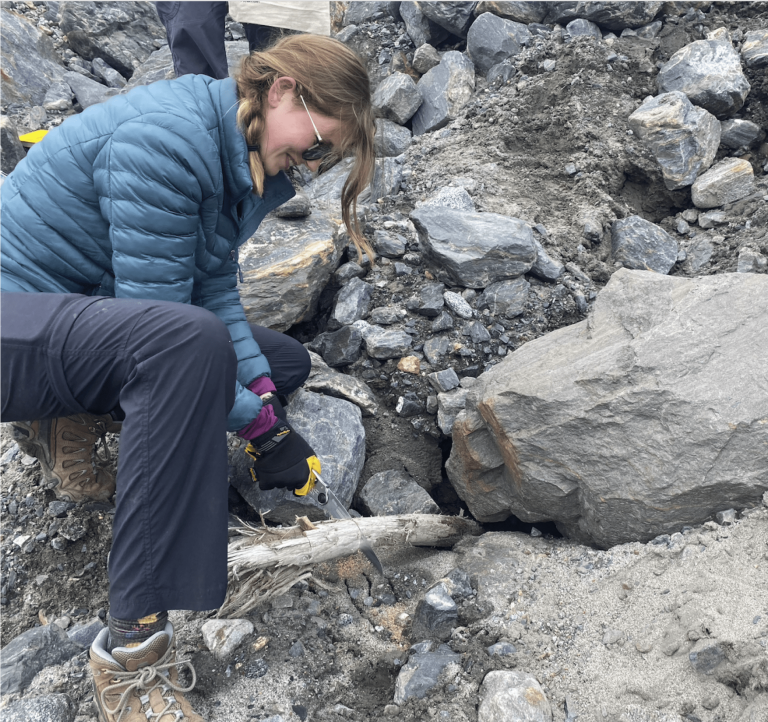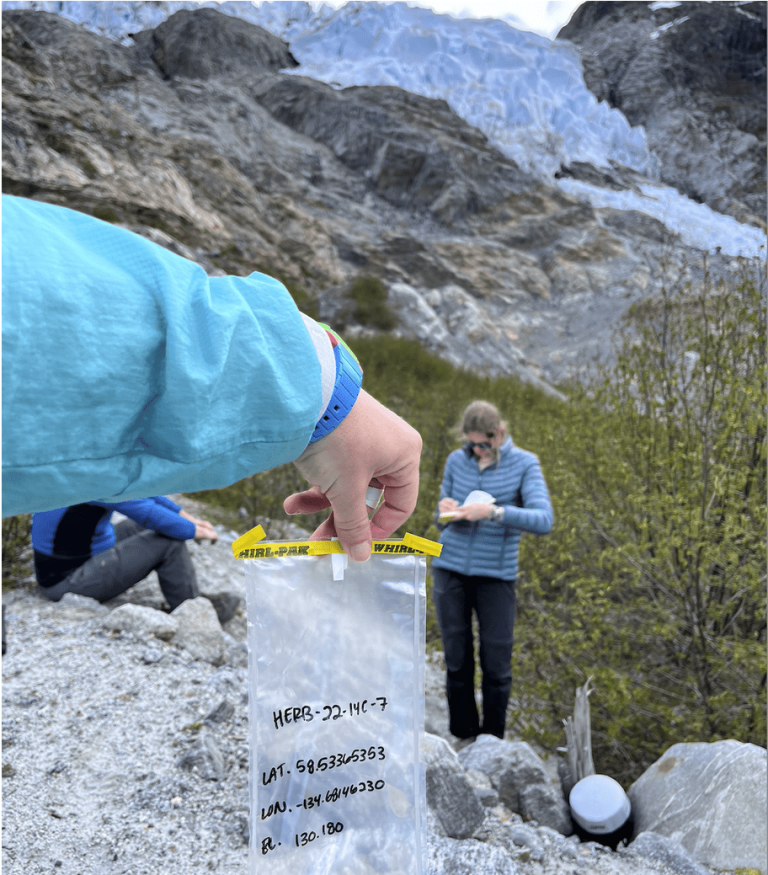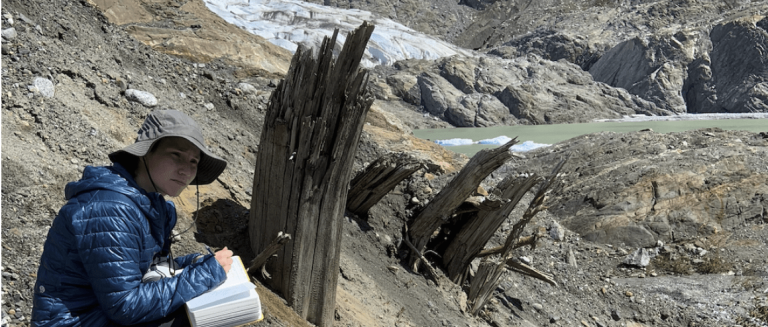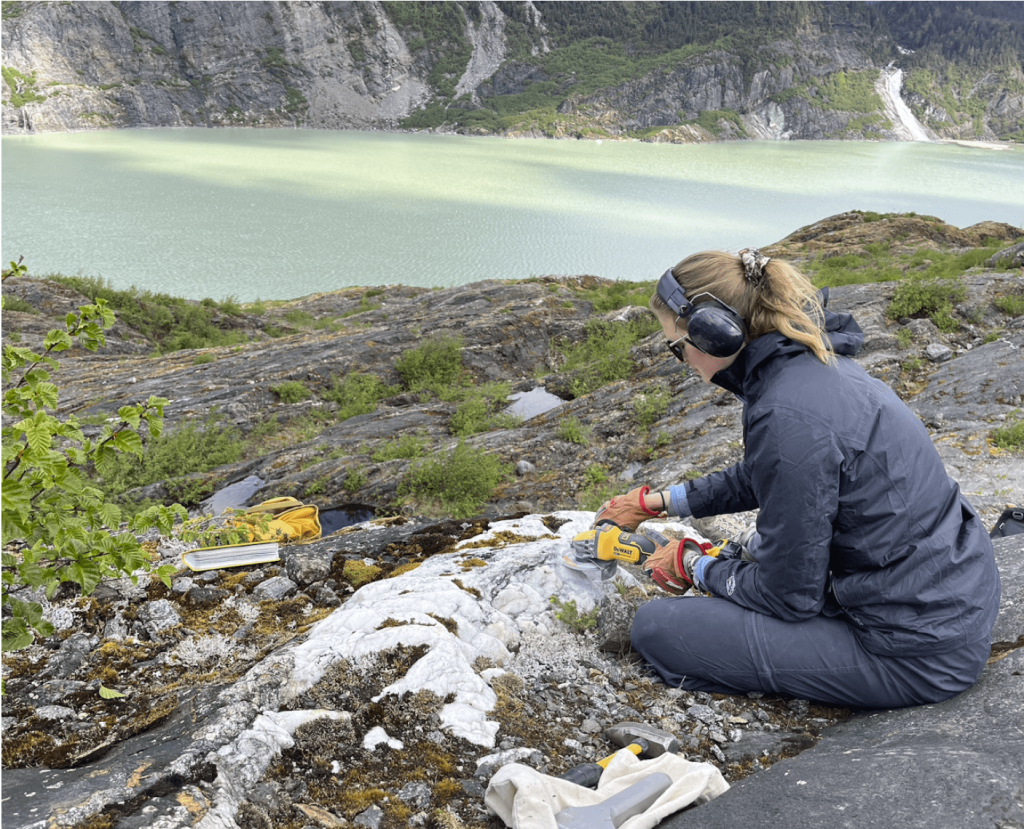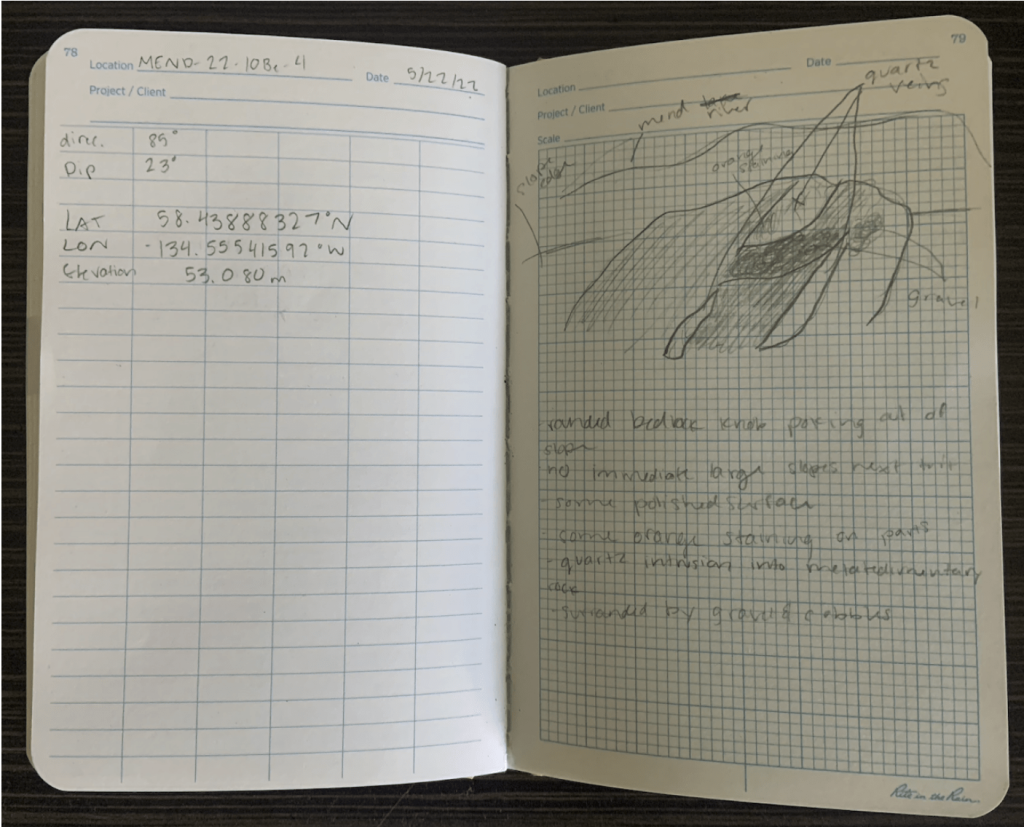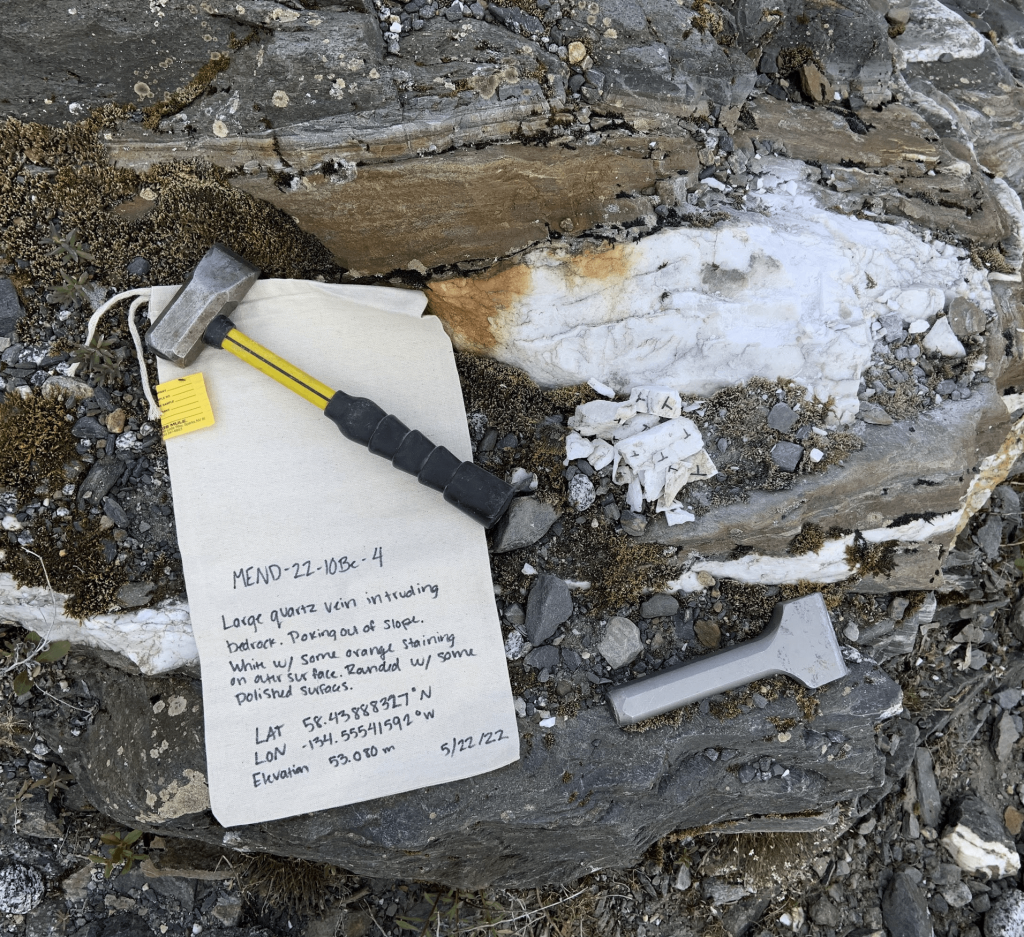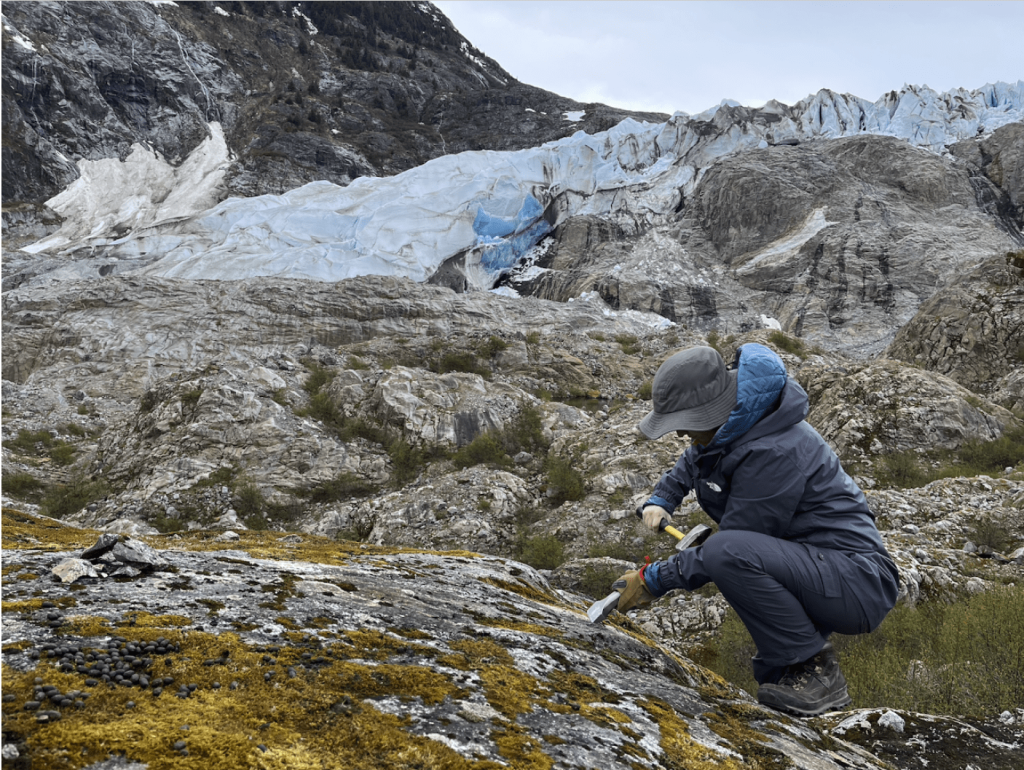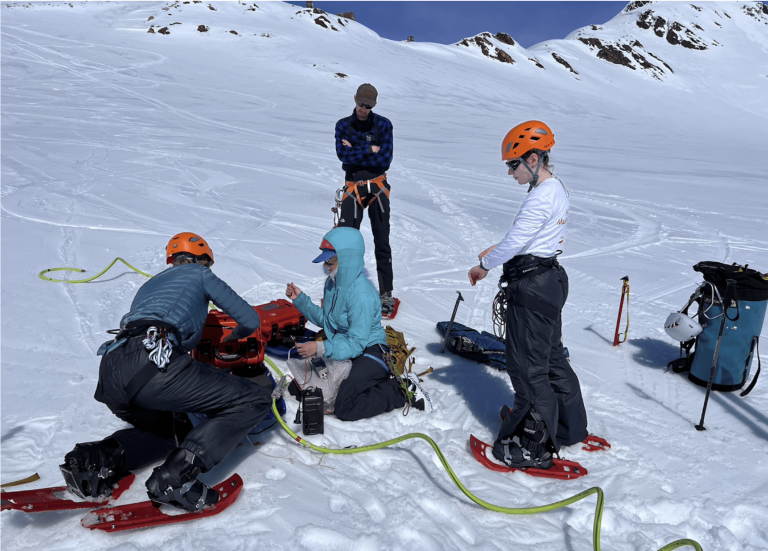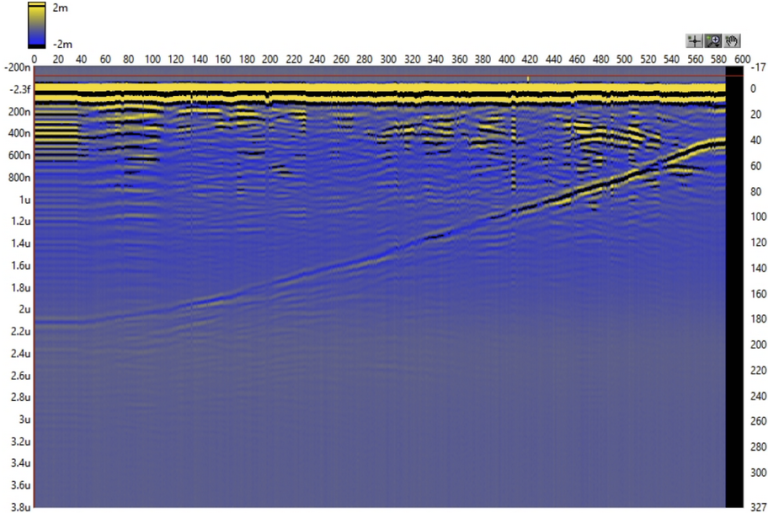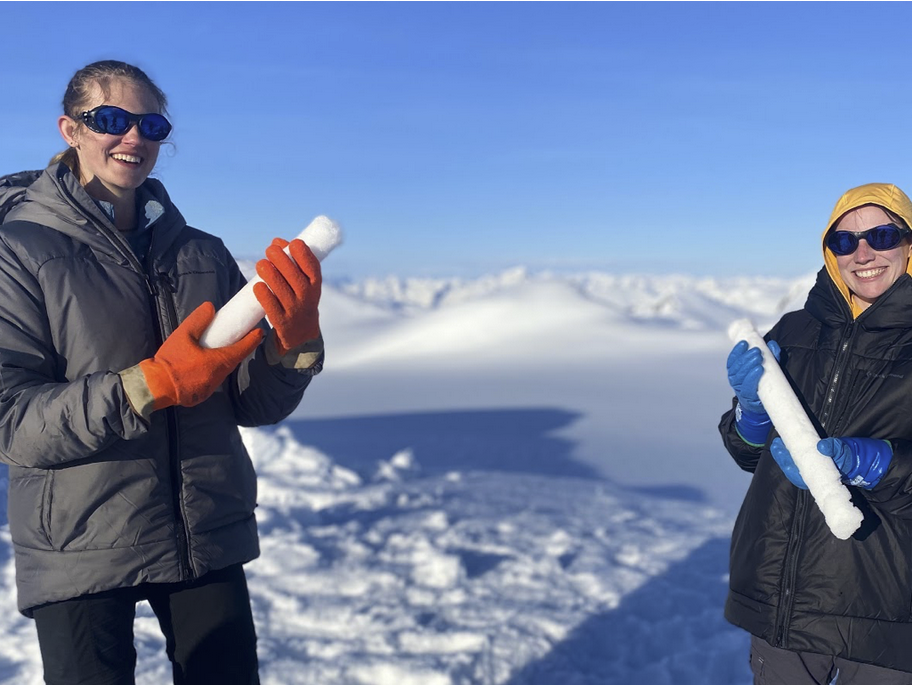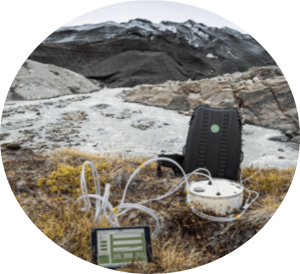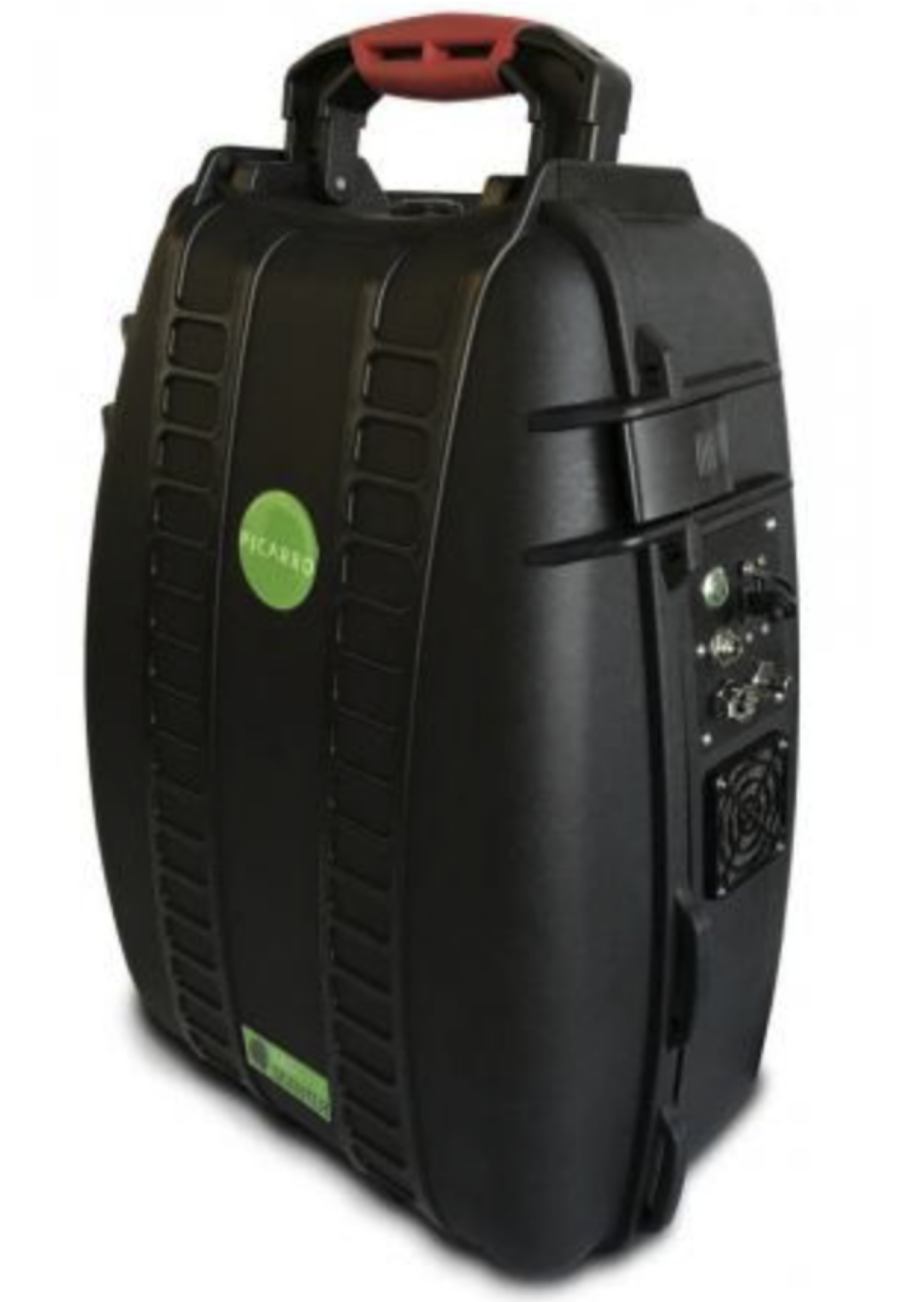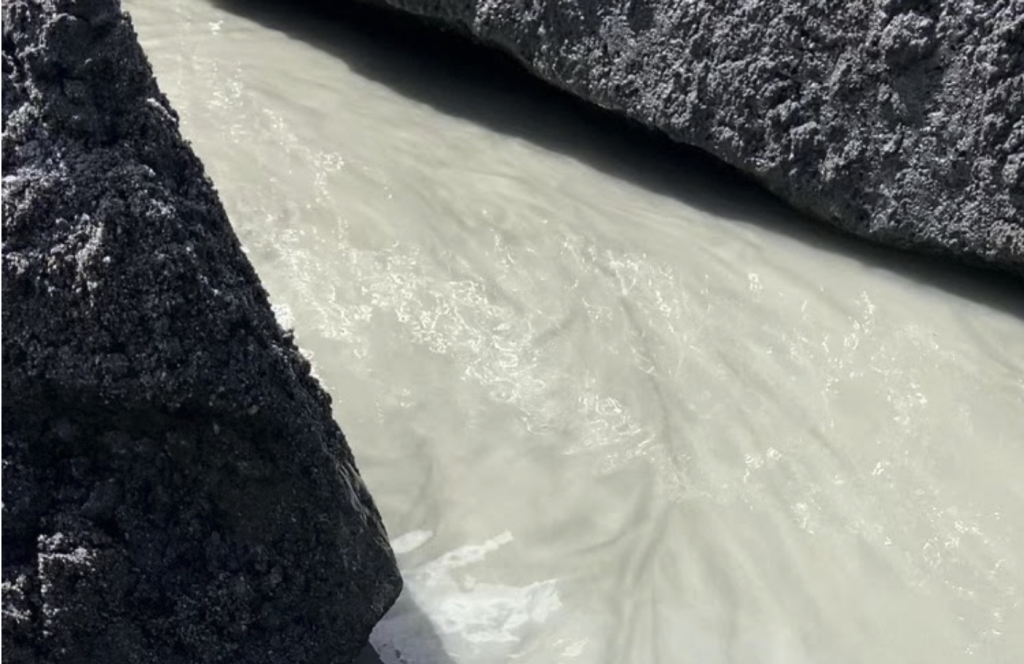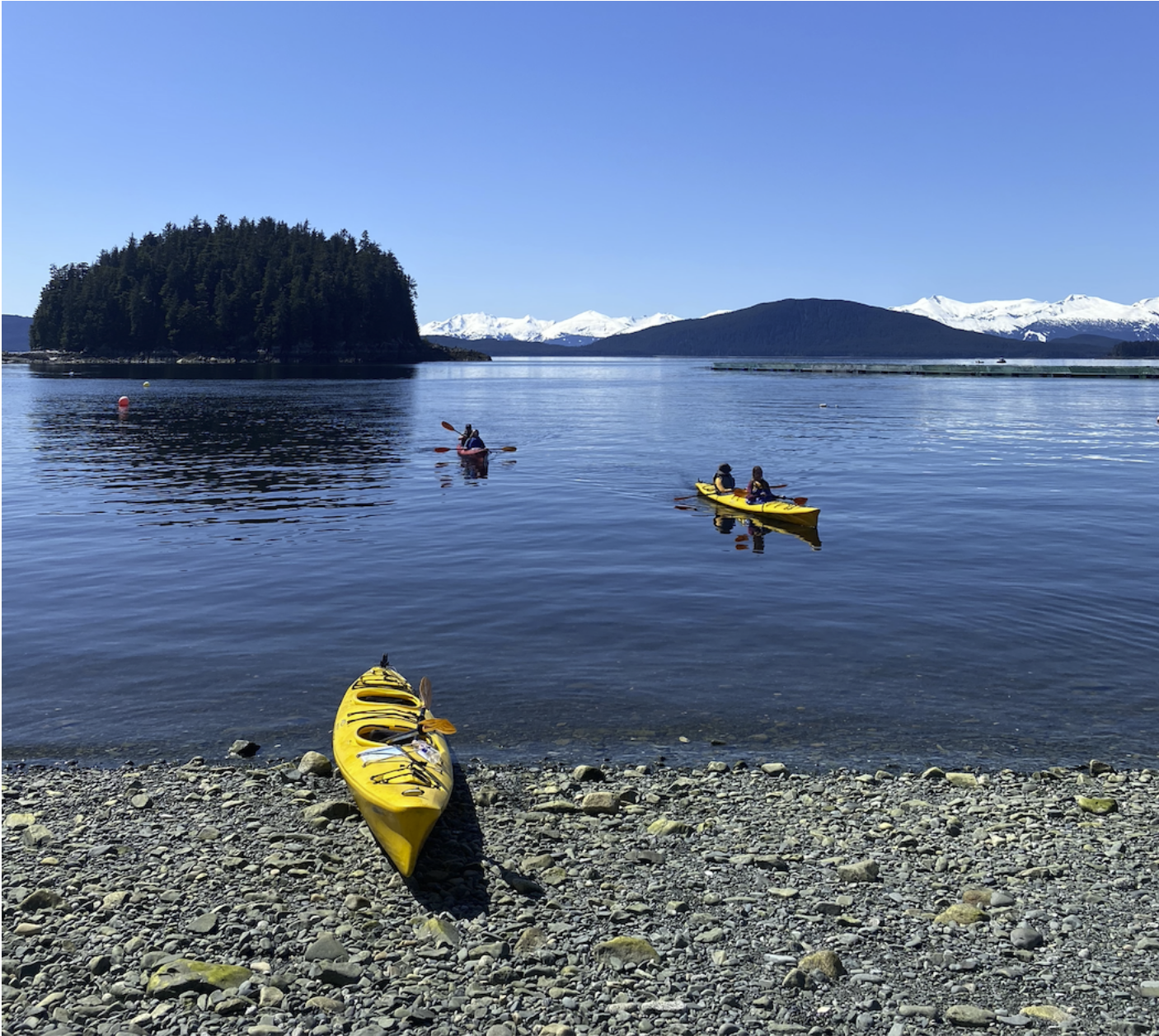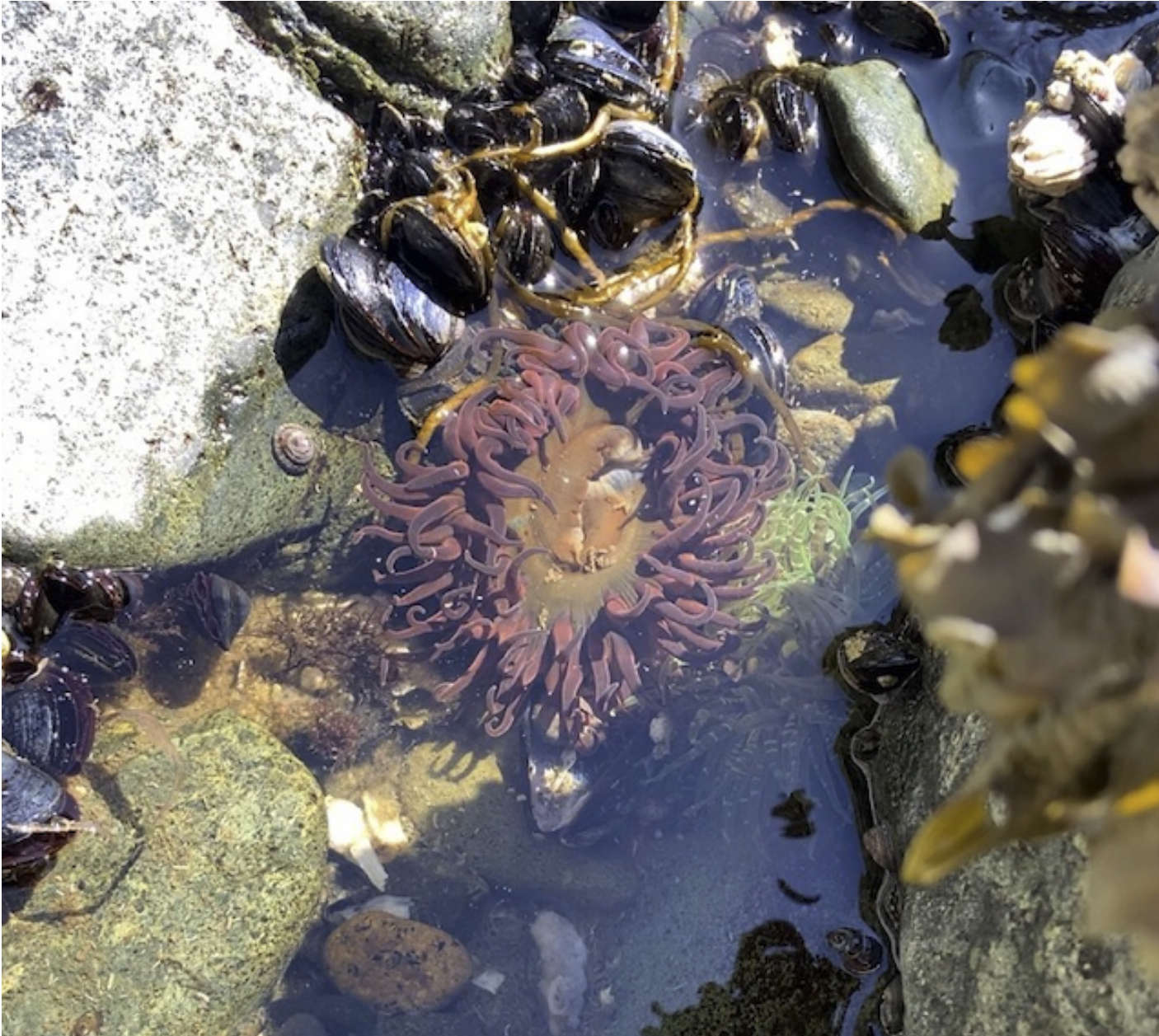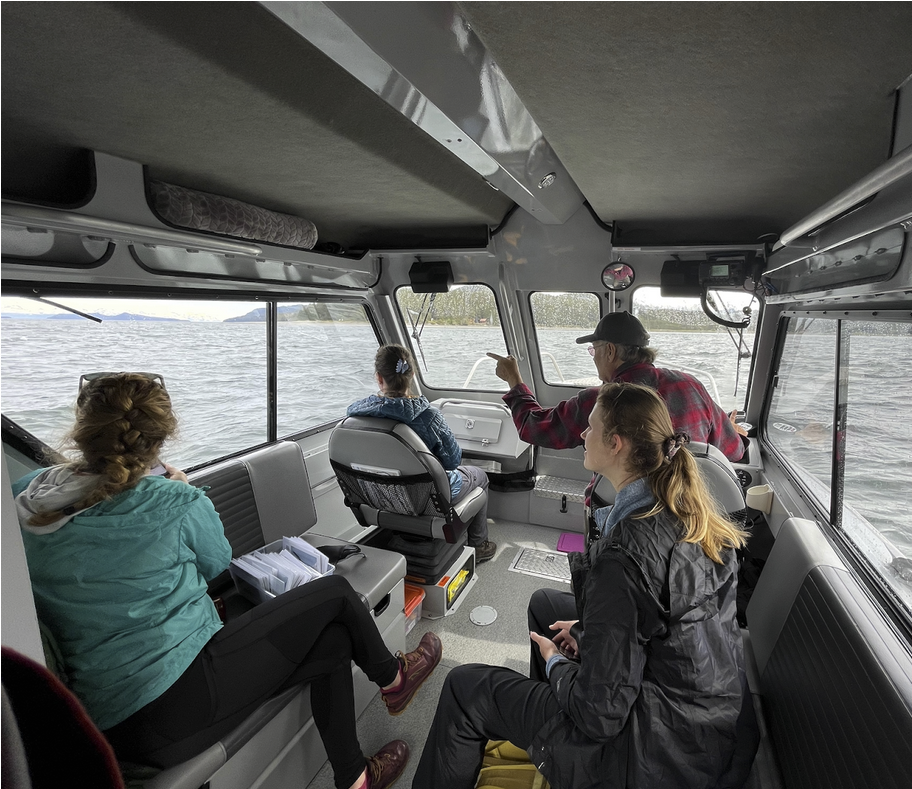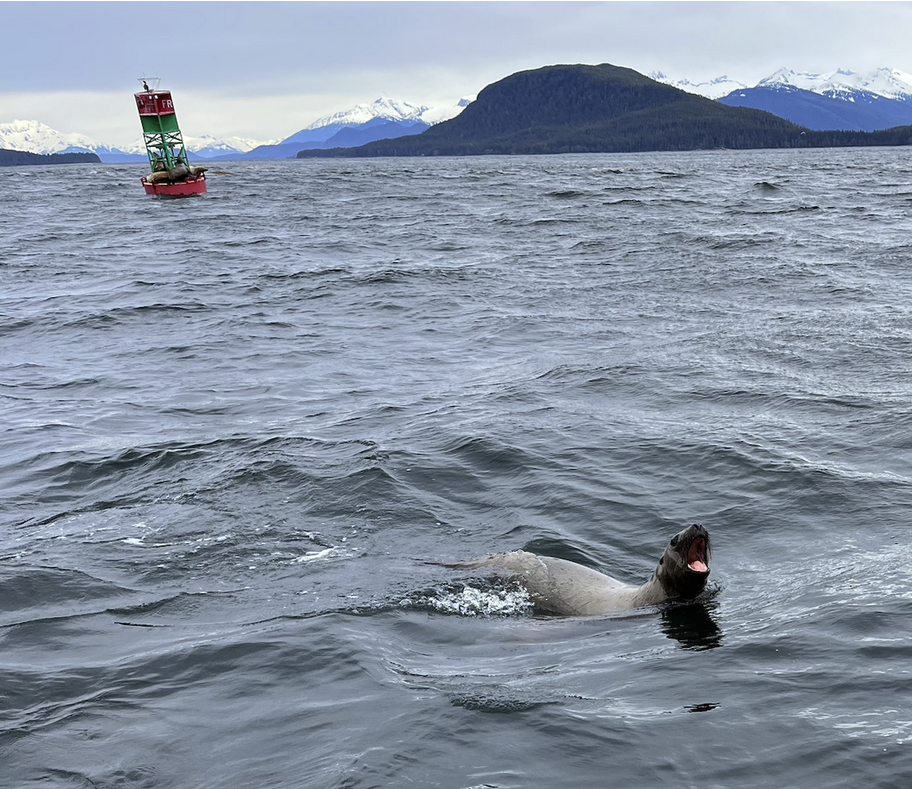Activities
Science Communication
Students will have the unique opportunity to communicate their experiences from the trip through an art project. Professional artist and guest lecturer Leslie Sobel will guide students through the process of creating an accordion book. See examples from Spring 2022 below!
Spring 2022 Examples.
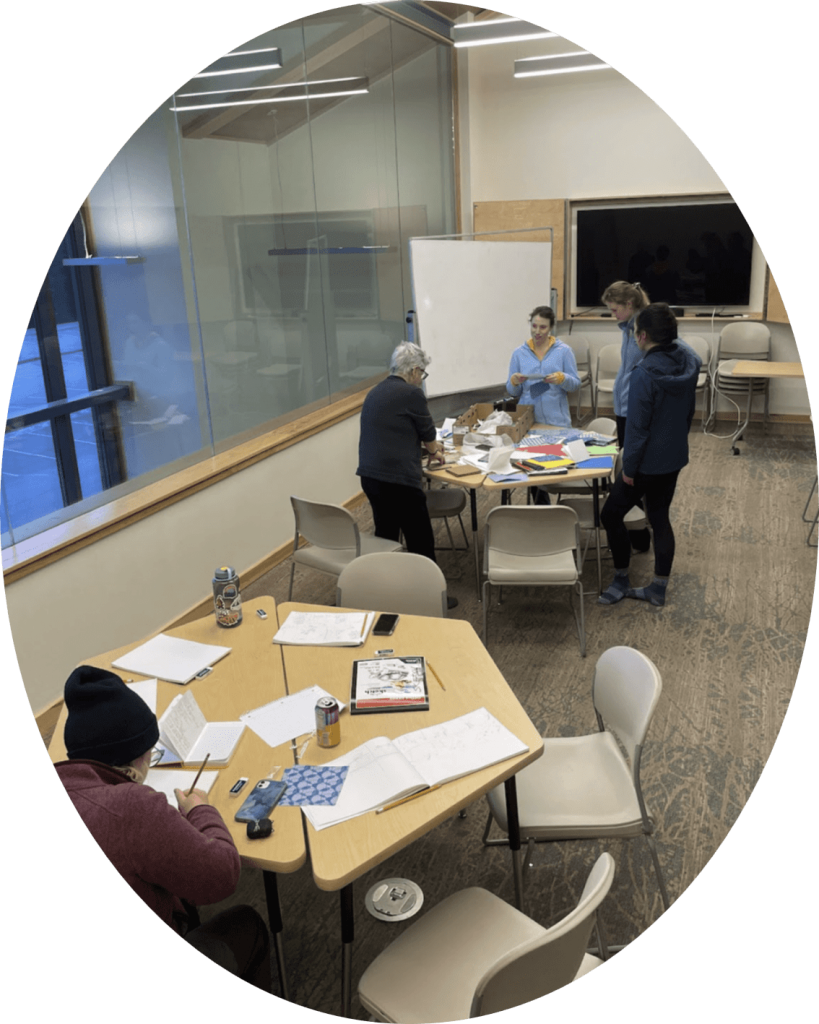
Radiocarbon Analysis
The Mendenhall and Herbert glacier termini uniquely have preglacial stumps and detrital logs that have freshly emerged from the retreating glaciers. These pieces of wood may hold information on previous Holocene warm periods. Radiocarbon dating the outermost layer of the trees will reveal when the trees were overrun by the expanding glaciers, and thus the end of the warm period. These dates will then be combined with tree ring samples to determine the duration of the warm period.
Cosmogenic Isotope Dating
The Mendenhall and Herbert glaciers are retreating and uncovering large bedrock outcrops. Students will have the opportunity to sample these surfaces and apply cosmogenic isotope dating to determine prior exposure. This could reveal another time the glacier was recceding and could indicate a warm period during the Holocene.
Ground-and-Ice-Penetrating Radar
Students may have the opportunity to use an ice radar to analyze the accumulation zone of a glacier. The ice radar is towed across the glacier to image the subsurface. The image can then be used to find depth to bedrock and potentially layers or artifcats in the ice.
Snow and Ice Sampling
Weather dependent, students may have the opportunity to collect ice samples and drill cores into the snow and ice. Ice samples will be later used for radiocarbon and other isotope analyses.
Greenhouse Gas Analysis
Students will have to have the opportunity to measure carbon and methane gas concentrations of the air trapped in the Spaulding Meadows Bog. Measurements will be used in combination with other field observations to analyze fluxes and sinks of the local system.
(Photos from Picarro)
Water Isotope Analysis
Throughout the duration of the trip, water samples will be collected for stable isotope analysis. Sites collected may include the Mendenhall and Herbert glaciers, the Herbert River, and offshore via kayak or boat. The combination of data points may yeild a picture of how stable isotopes move through a system.
Coastal Activites
Students will get to explore the Alaskan Coast on sea kayaks and by boat. They will join Jayleen’s Alaska on a private whale watch. During the spring, there are plenty of humpback whales to spot in addition to other wildlife like sea birds and sea lions! There are also opportinites to observe unique vegetation, massive sea stars, and sea anemones in the tidepools. Also while on the water, students will collect water samples for later isotope analysis.
UMaine Student Symposium
As part of the capstone experience, students will construct and present a poster of their research for the annual UMaine Student Symposium. The poster will include an overview of all the planned research that will be conducted on the trip. The symposium will give them practice with abstract writing, and effective scientific communication. Additionally, it will give them the opportunity to build a plan for the trip and choose what data to prioritize.
